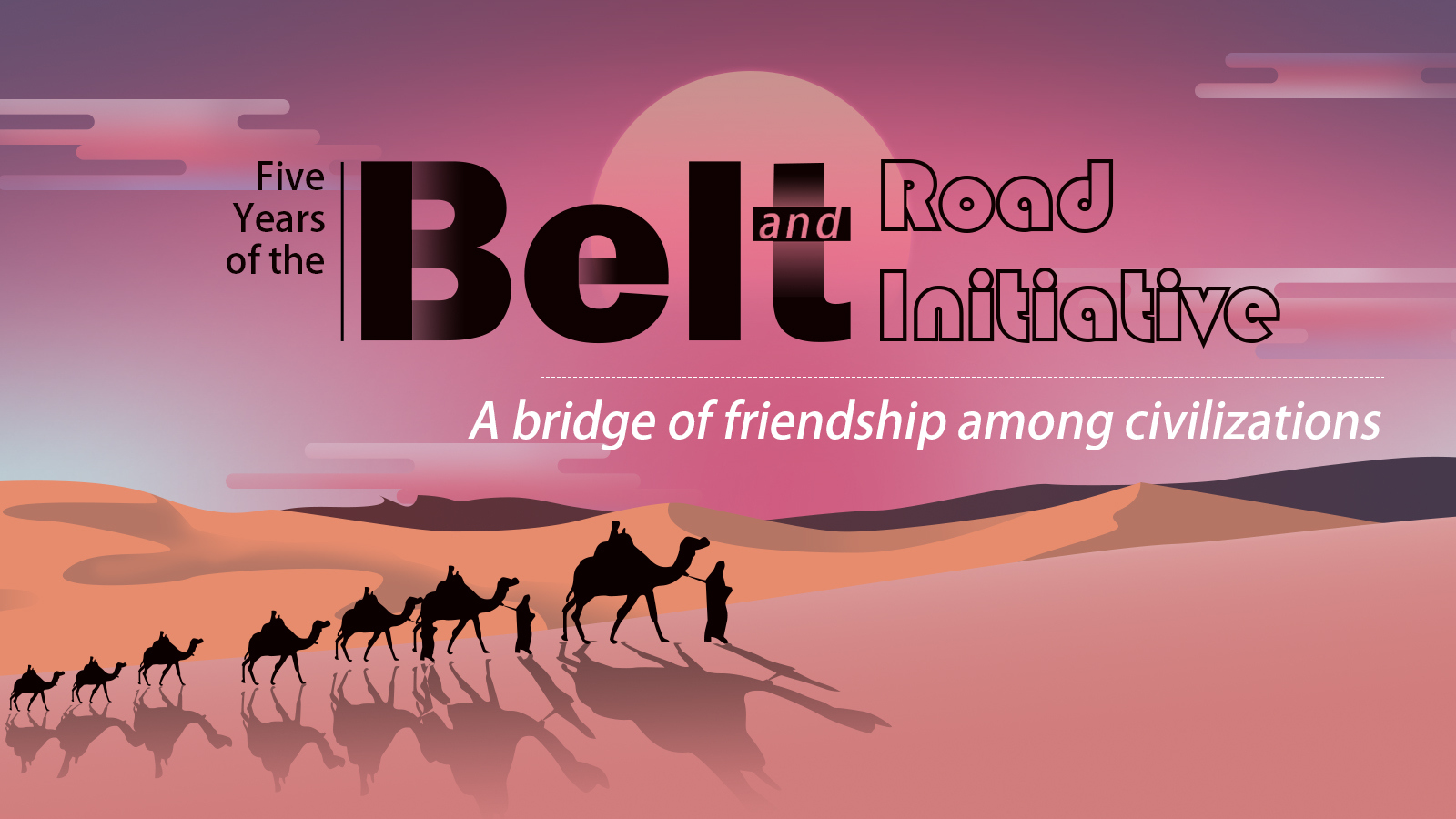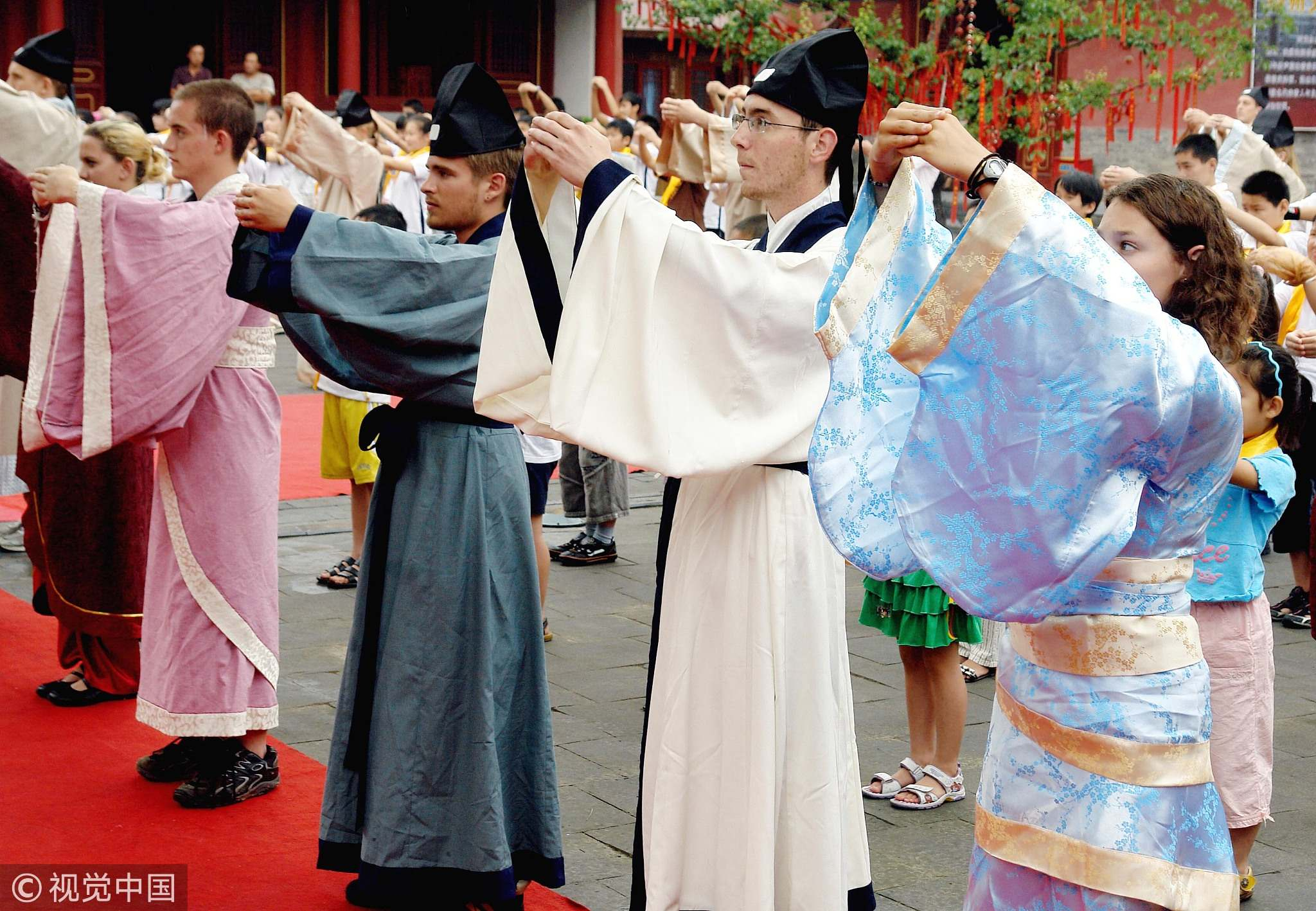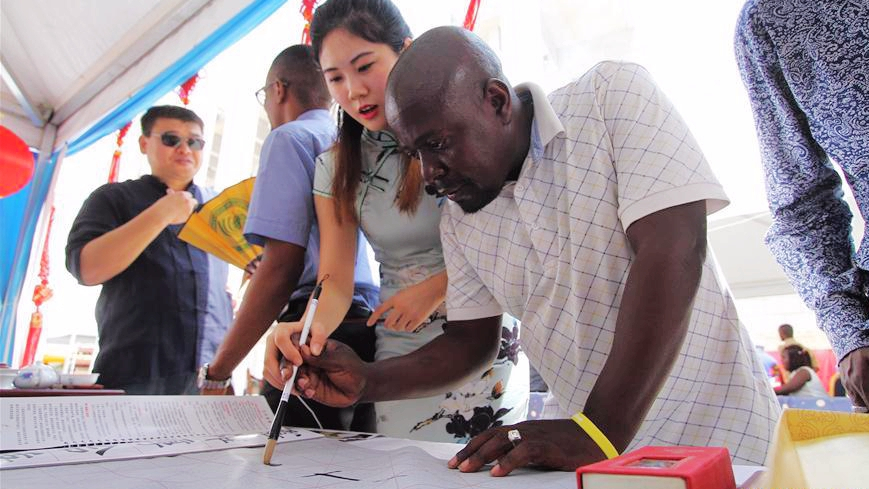
Opinion
15:19, 26-Apr-2019
BRI: A bridge of friendship among civilizations
CGTN

Editor's Note: With the second Belt and Road forum for International Cooperation opening this week, the BRI has been thrust into the media limelight. What has been achieved in the past five years since the initiative was first put forward? How to turn the BRI vision into reality? Five Years of the Belt and Road Initiative is a book series co-published by Chongyang Institute for Financial Studies, Renmin University of China and Foreign Language Press, analyzing the initiative from the perspectives of policy communication, infrastructure connectivity, trade connectivity, financial integration, and people-to-people connectivity. Here is an excerpt of the episode on people-to-people connectivity.
As the ancient Chinese saying goes, "amity between people holds the key to sound relations between states." In the past five years since the Belt and Road Initiative (BRI) was launched, China has vigorously carried forward the Silk Road spirit, promoted people-to-people exchanges in education, culture, health, sports, tourism and so forth among BRI countries and regions.
After years of efforts, multi-layered exchanges among youth, enterprises, social organizations, political parties, and other social groups have been effectively implemented, laying a solid social foundation of consensus for further BRI constructions.
In youth exchanges, China and Central and Eastern European countries (CEEC) jointly hold a Young Political Leaders Forum every two years and an Education Policy Dialogue annually. China provides 5,000 scholarships for exchange students from these countries every year.
China has also organized regular visits with friendship associations from the Arab States. The UAE Youth Ambassadors Program in China has been held six times, consolidating the civil foundation of Chinese-Arab friendship.
Education exchanges have gained extensive acceptance and support among BRI countries. According to UNESCO, more than 60 percent of international students receiving higher education are from BRI countries and regions in the past ten years, with a trend of steady growth.
From 2015 to 2018, China initiated 351 international cooperation programs with BRI countries, providing school education to nearly 6,000 people and training sessions to over 100,000.

American students pay tribute to Confucius in Zhengzhou, Henan Province, central China. /VCG Photo
American students pay tribute to Confucius in Zhengzhou, Henan Province, central China. /VCG Photo
The Confucius Institute is one of the most popular educational programs. There are 16 Confucius Institutes and 20 Confucius Classrooms in Thailand, offering Chinese language teaching services to the Thai public. These projects are a boon to people-to-people connectivity between the two countries.
In cultural exchanges, China has been actively organizing cultural forums and other forms of activities with BRI countries. For instance, the Drunken Root Cup carving competition has been held for five years. In 2017, the event attracted 16 international root carving artists from 15 countries including Switzerland, Japan, Indonesia, Saudi Arabia, Russia, Ukraine, Hungary, Lithuania, Italy, and France.
Other cultural activities including China-ASEAN Ethnic Culture Forum, China-ASEAN (Nanning) Theater Week, Anhui New Year Acrobatic Performance, China-CEEC Cultural Cooperation Forum, and China-CEEC Summer Dance Camp have further intensified people-to-people bonds among BRI countries and regions.
In health cooperation, China has provided a number of public products to and deepened cooperation with BRI countries in infectious disease control, talent training, Chinese medicine promotion, and other relevant fields.
In August 2018, Chinese naval hospital ship "Peace Ark" launched a friendly visit to Fiji in the South Pacific. During the visit, the vessel not only operated all-weather diagnosis and treatment but also dispatched 12 medical squads to service local health centers for four consecutive days.
In 2018 alone, the hospital ship conducted humanitarian medical services in more than 10 countries including Papua New Guinea, Vanuatu, Tonga, Colombia, Venezuela, Dominica, Antigua and Barbuda, Dominica and Ecuador.

A Chinese teacher from Confucius Institute of Dodoma University instructs a Tanzanian man on writing Chinese calligraphy in Dar es Salaam, February 9, 2018. /Xinhua Photo
A Chinese teacher from Confucius Institute of Dodoma University instructs a Tanzanian man on writing Chinese calligraphy in Dar es Salaam, February 9, 2018. /Xinhua Photo
Since 2016, China's Ministry of Commerce and former Health and Family Planning Commission have vigorously promoted medical assistance projects, carrying out more than 5,000 cataract repair surgeries in over 10 Asian and African developing countries.
In tourism, China has been actively exploring Silk Road tourism routes and products. In May 2016, Chinese technology giant Baidu and Indonesia's Ministry of Tourism jointly organized the Traveler Summit, inviting Chinese travel enthusiasts to Indonesia and put forth a tourism itinerary in an attempt to attract more Chinese tourists to the island country.
Chinese companies and social organizations are the mainstays in promoting people-to-people connectivity. In its operations in Zambia, Sinoma Cement Co., Ltd., a subsidiary of China National Building Materials Group, has shouldered its social responsibilities to local communities. It has invested 1.5 million U.S. dollars in building hospitals and schools, drilled wells, repaired road, and donated food and daily necessities to orphanages.
Chinese telecommunications tycoon Huawei is another typical example. The company's Egypt branch has been actively training local talent in communication technology. Over the past few years, it has educated more than 5,000 professional technical personnel, employed nearly 700 local workers and indirectly created more than 2,000 jobs.
Friendship derives from close contacts between people. The BRI, sharing benefits with all countries and regions concerned, has become increasingly welcomed by the international community and added new vitality to the profound friendship between people in China and people in other BRI countries.
Stories in this series:
(If you want to contribute and have specific expertise, please contact us at opinions@cgtn.com.)

SITEMAP
Copyright © 2018 CGTN. Beijing ICP prepared NO.16065310-3
Copyright © 2018 CGTN. Beijing ICP prepared NO.16065310-3